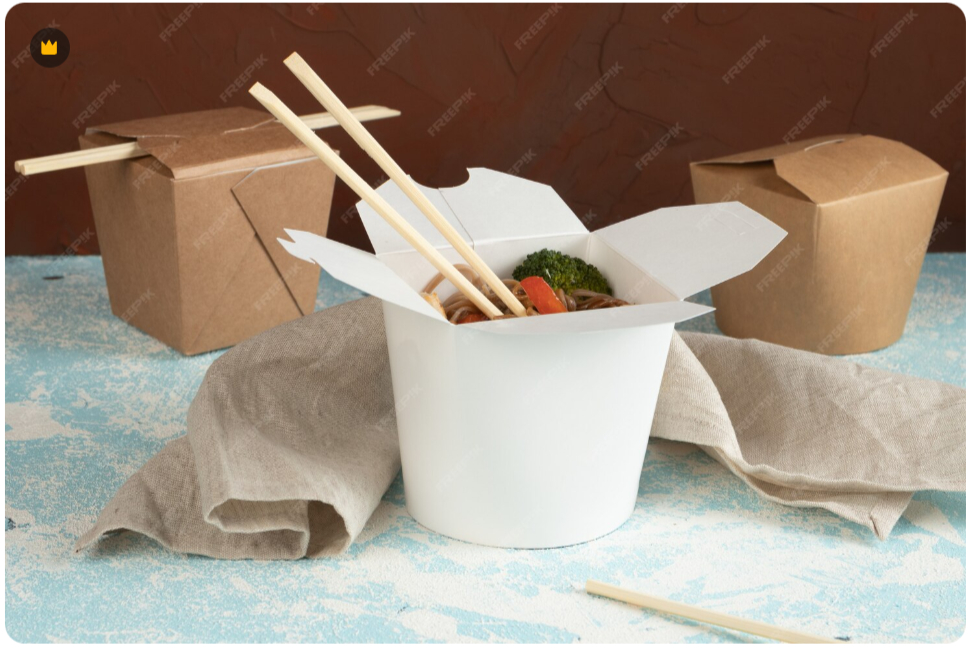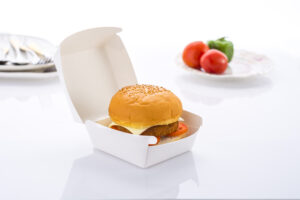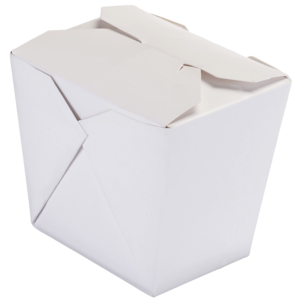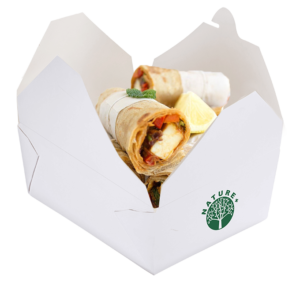Blog

Eco-Friendly and Sustainable Food Packaging: A Forever Solution for a Happier Environment
The food packaging industry is one of several global businesses embracing environmental friendly procedures as environmental concerns continue to rise. There are now creative, eco-friendly and sustainable food packaging materials available that don’t contribute as much to trash and pollution as traditional packaging materials like plastic. This post will discuss the advantages of utilizing environmentally friendly food packing boxes and how they help maintain a healthy earth.
What is Eco-Friendly Packaging?
Packaging materials and methods that are environmentally sustainable and have little to no negative environmental effects are referred as eco-friendly packaging. These materials are intended to be compostable and biodegradable and are made from recycled or renewable resources. Environmentally friendly packaging is also intended to use less energy and produce less waste.
It’s crucial to compare conventional and eco-friendly packaging materials to see which is better for the environment. Traditional packaging materials like recycled plastic and styrofoam harm the ecology. They can damage wildlife, cause pollution, and take hundreds of years to decompose. Because of its environmental advantages and sustainable nature, eco-friendly packaging is better than standard packaging materials.
What Are Environmentally Friendly Food Packaging Boxes?
Eco-friendly or Environmentally food packaging boxes use biodegradable, reusable or recyclable materials in their design to reduce their negative effects on the environment. These alternatives to traditional recycled plastic packaging break down naturally without releasing toxic chemicals. They can do so in a few of generations as opposed to centuries.
 Types of Environmentally Friendly Packaging Materials:
Types of Environmentally Friendly Packaging Materials:
1. Biodegradable Plastics:
Compared to petroleum-based plastics, biodegradable or recycled plastics break down considerably more quickly since made of natural ingredients like cornstarch or sugarcane.
2. Recycled Paper & Cardboard:
Paper-based packaging is a popular option for environmental conscious firms because it is readily recyclable and biodegradable.
3. Plant-Based Packaging:
Environmentally friendly Food containers that are robust and biodegradable are being produced using bamboo, bagasse a sugarcane byproduct and palm fronds.
4. Edible Packaging:
Packaging innovations, including those made of rice or seaweed, can be eaten with the meal, producing no waste.
Benefits of Eco Friendly and Sustainable Food Packaging:
1. Benefits of eco-friendly food packaging for the environment
• Less waste ends up in landfills: The use of biodegradable packaging immediately reduces the amount of non-biodegradable garbage, which lessens the environmental impact of traditional packaging waste ending up in landfills.
• Reduces greenhouse gas emissions: The production of sustainable Food packaging solutions frequently uses less greenhouse gas, which lowers carbon emissions. This is essential for reducing the effects of climate change.
• Reduces dependency on limited natural resources: Packaging made of sustainable materials uses fewer natural resources. Because they come from renewable resources, these materials preserve the biodiversity of the earth by using less resources to manufacture.
• Lowers water pollution: By using environmentally friendly packaging options, businesses stay away from employing dangerous chemicals that can contaminate streams, cutting down on pollution and safeguarding aquatic environments.
2. Economic benefits of eco-friendly packaging for businesses
• Reduces production costs: Using sustainable Food packaging materials might eventually result in lower production costs because they are often sourced from more reasonably priced, renewable resources and can be produced using more effective manufacturing techniques.
• Enhances brand reputation: Making use of environmentally friendly packaging helps a business attract more customers who value sustainability and raises its profile in the marketplace.
Challenges Facing Eco-Friendly Packaging:
1. Cost: Compared to conventional recycled plastics, sustainable materials can be more expensive; however, this difference is narrowing as demand rises. The cost is one of the main obstacles that firms have to overcome when switching to eco-friendly food packaging. Because eco-friendly products are more expensive than conventional materials, small firms with tight resources are discouraged from using them.
2. Durability: Some environmentally friendly packaging could not be as protective or durable as traditional packaging, which makes it less appropriate for some food kinds.
3. Infrastructure for Recycling: Paper and cardboard recycled easily, but many areas still lack the facilities necessary to properly compost or recycle more creative packaging materials.
Furthermore, it’s possible that eco-friendly products are not easily accessible, which presents logistical difficulties for businesses.
Conclusion:
Environmentally friendly food packaging boxes are a viable substitute for conventional single use plastic containers, significantly mitigating pollution and preserving natural resources. Businesses that use these more environmental friendly solutions not only appeal to eco-aware customers but also contribute to environmental protection. We can all help create a healthier, more sustainable future by selecting sustainable food packaging. Looking for an eco-friendly food packaging manufacturer in India? then contact Natureplus. We provide you with eco-friendly & customized solutions at the best price.
